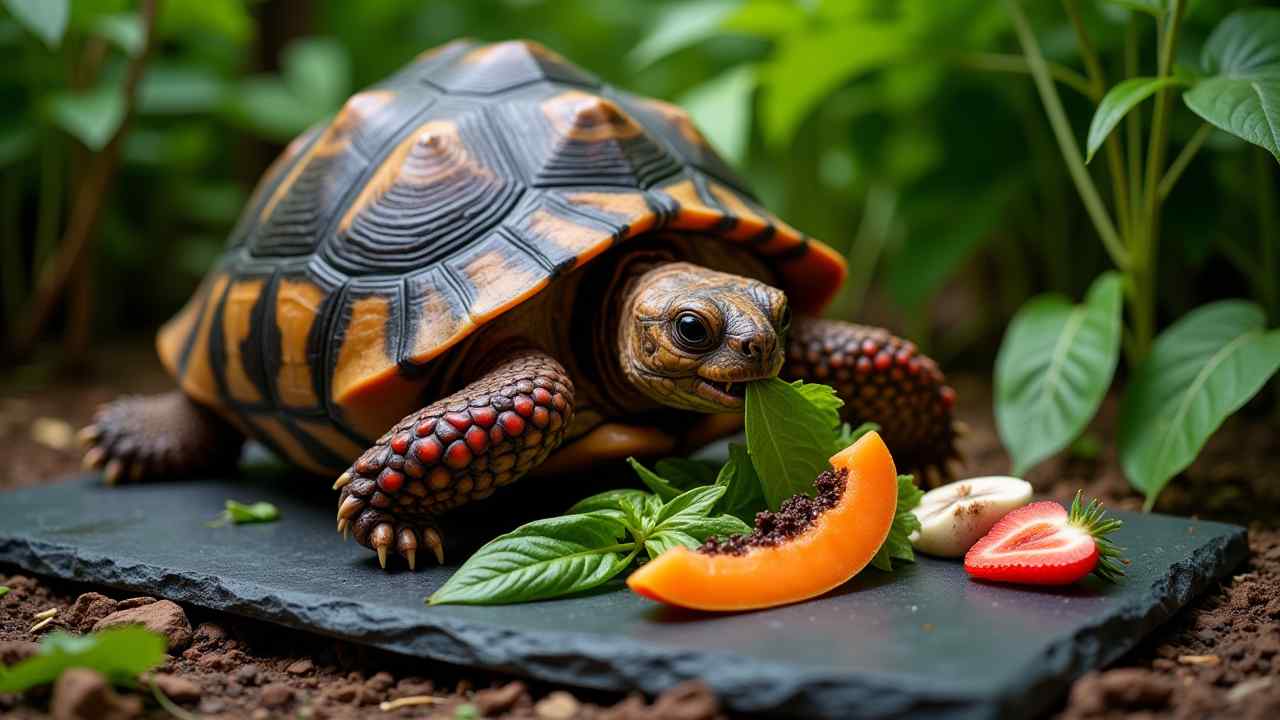
🐢 The Ultimate Red-Footed Tortoise Diet (A Complete Feeding Guide)
🐢 A Guide to the Red-Footed Tortoise Diet (What to Feed Your Pet) 🐢
Red-footed tortoises are beautiful, intelligent, and long-lived pets. Providing them with the right diet is the single most important thing you can do for their health. A proper red-footed tortoise diet will ensure they have a strong shell, healthy growth, and a long, happy life.
Unlike many other popular pet tortoises, red-foots have unique dietary needs. Understanding what they eat in their natural habitat is the key to feeding them correctly. This guide will provide a complete overview of their nutritional requirements.
We will cover the perfect balance of foods. Let's create a meal plan that will help your tortoise thrive. Let's start this journey to perfect tortoise nutrition! ✅
🤔 Are Red-Footed Tortoises Herbivores?
This is the most important question to answer first. Unlike many other tortoises (like the Sulcata), red-footed tortoises are omnivores. This means their diet consists of a variety of foods. It includes vegetables, fruits, and a small amount of animal protein.
Their diet is still primarily plant-based. However, the inclusion of fruit and some protein is what makes the red-footed tortoise diet unique. Feeding them only vegetables and greens would be an incomplete and unhealthy diet for this species.
🥬 What is the Foundation of Their Diet? (Vegetables & Greens)
The largest portion of their diet should be a wide variety of leafy greens and other vegetables. This should make up about 50% of what they eat. You should offer a mix of different vegetables every day to provide a range of nutrients.
The best choices are dark, leafy greens that are high in calcium. Excellent options include:
- Collard greens
- Mustard greens
- Dandelion greens
- Kale
You can also add other healthy vegetables like squash, bell peppers ("biber"), and mushrooms. Finding fresh greens at a local market ("pazar") here in Bursa is a great way to provide variety.
🥭 Can Red-Footed Tortoises Eat Fruit?
Yes! This is a key difference in the red-footed tortoise diet compared to other species. Fruit is a significant and important part of their natural diet. They love sweet, colorful fruits. Fruit should make up about 30-40% of their weekly food intake.
The best fruits are those that are nutritious and easy to digest. Great choices include:
- Papaya and mango
- Berries (strawberries, blueberries)
- Melon
As a special autumn treat, seasonal fruits like fresh figs ("incir") are a fantastic option. Just remember that fruit is a major part of their diet, not just a rare treat. 🍓
🐛 What About Animal Protein?
As omnivores, red-footed tortoises do eat some animal protein in the wild. However, for an adult pet tortoise, protein should be a very small part of their diet. It should only be about 10% of their total food intake. Too much protein can cause shell problems and damage their kidneys.
A small portion of protein can be offered about once a week. Good sources include:
- Earthworms or nightcrawlers
- A very small amount of a high-quality, low-fat cat food (as a supplement)
Young, growing tortoises need more protein than adults. They can be offered a small amount of protein every other day. This is a crucial part of a healthy red-footed tortoise diet for a juvenile.
🦴 Why is Calcium So Important?
Calcium is absolutely vital for your tortoise's health. It is essential for strong bones and proper shell growth. Without enough calcium, they can develop serious health issues like Metabolic Bone Disease. They also need UVB light to be able to properly absorb and use the calcium.
The best way to provide calcium is to lightly dust their food with a calcium supplement powder a few times a week. You should also always have a cuttlebone available in their enclosure. They will gnaw on it as they need it. This is a non-negotiable part of their care. ✨